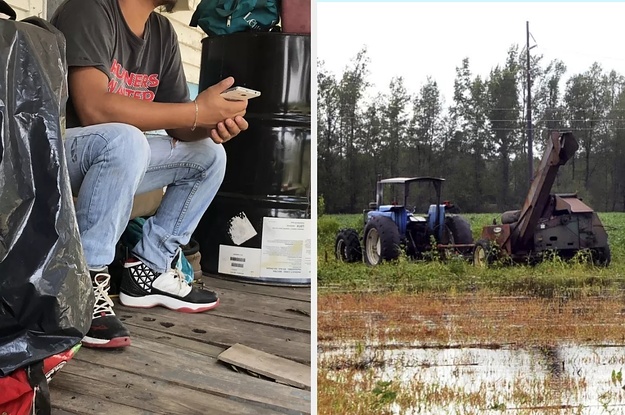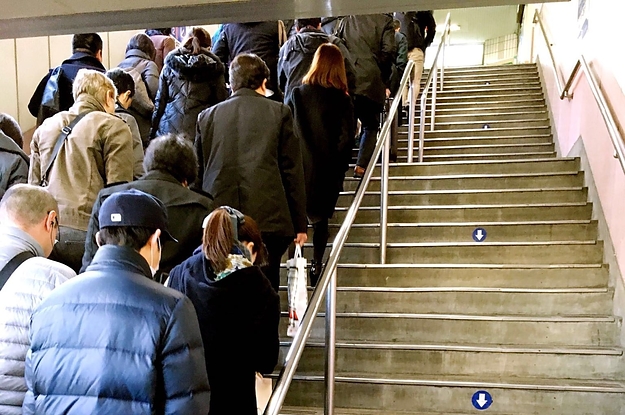Imagine waking up to smoke filling your room. What would you do? The answer might seem obvious at first — you’d look for the nearest exit.
But it’s not always that simple.
What if your partner, pets, or your children were also inside? Would you still be so quick to look for a way out, or would you first focus on finding a way to help them get out too — even if that meant doing something dangerous?
What if all the exits were engulfed by flames, making your escape even more dangerous than simply staying put and calling for help?
Or what about if the downed powerline you can see from the window, which caused the fire in the first place, made it risky to step outside? What if your only exit was through a window, which would require that you fall three stories before reaching the ground?
Now imagine there were other voices chiming in. What if someone you loved told you not to worry — that it was just dinner that they burnt in the oven? What if someone you trusted asked, “What smoke? I don’t see any. Are you sure there’s smoke?” Would you still be looking for an exit?
It’s easy to think that if we were in a dangerous situation, we’d know exactly what to do.
But there are lots of factors that can change our actions — and sometimes, knowing what to do or when to leave isn’t as immediately clear-cut.
This is why, for survivors of abuse, especially when they’re under the age of 18, the question is rarely as simple as, “Do I leave?”
Young people who are sexually exploited — manipulated, forced, or pressured into performing sexual acts for money or other resources like food, shelter, or support — are especially vulnerable, as their survival is often bound to the same person who’s exploiting them.
Minors have an additional set of challenges, as they often have fewer resources and greater vulnerability as they aren't yet adults.
For those youth, “Do I leave?” is just one question among a million they’ll be faced with. They’ll need to know where they’ll go next, if it’s safe to leave, who they can trust, and if they have the resources to survive, assuming that they realize they’re victims in the first place.
While help exists for survivors, each one of us has a part to play in supporting them. If we were all better informed about their struggles, we could more readily step up to build communities of support around them.
So, like with the smoke-filled room, maybe the better question to ask is: what obstacles prevent victims from safely leaving their exploiters? Here are 13 reasons why they might struggle to get help:
1. They might not see themselves as victims at all.
The psychological tactics that an exploiter might use can make it difficult for victims to realize they’re being exploited at first. This process, called “grooming,” ensures that an abuser has earned their victim’s trust and dependency before escalating the abuse.
They do this through offering affection, gifts, shelter, food, or any kind of resources that a victim might need physically or emotionally. It’s only when their victim is dependent that the abuse escalates — and by then, it’s likely that the victim is bonded to their abuser.
2. In some cases, exploitation is already normalized.
While youth sex trafficking happens in every state in the U.S., there are some communities where sexual exploitation happens more frequently — particularly in under-resourced areas. Victims in those communities may see it as a survival strategy, rather than a form of violence and exploitation.
“A lot of times these exploiters are coming out of similar communities,” Lenore Jean-Baptiste, Community Engagement Specialist at the Nevada Partnership for Homeless Youth, explains. “[Some victims have] seen exploitation, but they called it ‘pimping’ . . . it becomes normalized [and assumed] this is the way it is.”
If you grew up in an abusive home environment, too, it can be difficult to recognize the violence as it’s taking place because you’re already desensitized to it.
3. The culture at-large doesn’t make this any better, either.
Girls and women especially are sexualized at increasingly younger ages. When they are encouraged at an early age to view their bodies as objects and their sexuality as a form of currency, Jean-Baptiste says, and conditioned to believe they do not have autonomy over their own bodies, they’re more vulnerable to exploitation.
“The oversexualization of them and their bodies becomes glamorous,” Jean-Baptiste explains. “They’re tailored and groomed by an over-sexualized society.”
As a result, she says, they’re less likely to recognize the abuse as it’s happening, and less likely to consider leaving.
4. Victims might be fleeing abuse or neglect, so they feel safer with their exploiter.
Many youth victims of trafficking are actually runaways. In some cases, the exploitation might initially feel more secure than the chaotic or even violent situations that led victims to run away in the first place, especially if their family members were the first to sexually exploit them — or are the exploiters in the situation.
“It’s really common to hear that they’ve been made to exchange sex for a place to stay or food to eat — or that someone who offers them a couch to sleep on [only] later ends up abusing or assaulting them,” Luke Hassevoort, Assistant Program Manager at Common Ground, explains.
“They’re not viewing themselves as victims, because they’re viewing the situation as survival,” Jean-Baptiste says. “[Often times] they leave [home] to save their lives.”
Survival should not require exploitation, though — and victims need to know that safety nets exist to protect them.
![]()
Youth Survivor, Youth Living Out Loud, program of Wraparound Milwaukee.
5. Victims might feel like their trafficker is the only person that’s ever been accepting.
A history of abuse, neglect, or bullying can also create a vulnerability that traffickers can take advantage of, Jean-Baptiste says. By offering the illusion of love, acceptance, and nurturing that victims didn’t have at home, traffickers create a bond that makes it very difficult for victims to leave.
This is especially true for youth trafficking victims who identify as LGBTQ+. Things like harassment, family rejection, and social isolation can drive LGBTQ+ people away from their communities, and can make traffickers seem like saviors rather than abusers.
Many communities have LGBTQ+ centers, though — which you can locate online — to find acceptance, resources, and support that a trafficker can never provide.
6. They might be reluctant to access services and support.
While being shuffled around, many youth aren't properly supported by educational, healthcare, juvenile justice, and welfare systems — sometimes all of the above, making it feel as though there's nowhere reliable to turn.
According to the National Foster Youth Institute, 60% of all child sex trafficking victims were, at some point, part of the child welfare system, and have fallen through the cracks.
This trauma can leave victims reluctant to reach out to social service providers. They might be afraid of seeking out help because they don’t want to be placed back into the same system that they didn’t feel protected them in the first place.
Traffickers may also position themselves as saviors that rescued them from the system, making victims feel trapped and indebted to them.
7. They might not trust law enforcement either.
Youth of color and those from under-resourced communities may have witnessed police brutality or racist altercations, making it difficult to see law enforcement as trustworthy.
Homeless youth, for example, might have been impacted when a police officer disrupted an encampment where they were staying, pressuring them to leave or disperse. For a young person with very little safety, this can feel destabilizing and even violent.
This could lead youth to view their exploiter as safer than law enforcement, leaving them reluctant to get help as their trafficker escalates the abuse.
Many law enforcement agencies haven't been properly trained to support exploited youth, either. They may not self-identify to law enforcement for many reasons including fear of arrest, fear of abuse from their trafficker, or immigration status.
Traffickers can even prey on this fear to keep victims from reaching out, feeding them a narrative that there’s no one that can help them or be trusted. “A lot of times traffickers can use those kinds of stories and experiences to make individuals feel fearful,” Jean-Baptiste explains.
8. They may not have anywhere to go.
Homeless youth are incredibly vulnerable to sex trafficking. Without the support and resources needed to survive, the idea of leaving their traffickers can feel impossible and even dangerous, particularly if their family members are their exploiters.
In that instance, family members may use the trust they've established to pressure youth into sexual acts to "provide" for the family — which, even when recognized as exploitation, can be difficult to leave without an established safety net.
This is further complicated by the reality that they may not be connected to their communities. This is especially true for homeless and foster youth. “Bouncing from place to place can make it tough to build lasting relationships [or] connect with a new school or neighborhood,” Kendan Elliott, Program Manager at MANY, explains.
9. Their dependency on their exploiters might make it seem like there aren’t other options.
Homelessness and poverty are both risk factors for trafficking, so it makes sense that escaping exploitation can be an uphill battle. Traffickers will use their resources to make their victims completely dependent on them, by offering things like food, emotional support, and shelter.
This can make exploitation appear to be better than any life victims had lived prior to being trafficked, or any kind of life they could build on their own when starting from square one.
“When you are faced with the choice of staying in a situation you know is messed up — or leaving with no money, no place to go, and no one you can call — what do you do?” Elliott explains. “It doesn’t feel like a choice.”
Victims can and do build extraordinary lives after exploitation, though. And local organizations offering housing options and other resources can help them take the first step.
10. They might have a disability that makes it challenging to recognize or escape exploitation.
Disabilities, both physical and mental, can complicate any form of violence.
For example, research has shown that girls with intellectual disabilities are at increased risk for sexual exploitation, because they are less likely to know what constitutes abuse — especially because exploiters are already very manipulative to begin with. They’re less likely to self-identify as victims as a result.
Youth with physical disabilities are also more vulnerable to exploitation by their caretakers because they are dependent on them. They are more prone to isolation, which makes them easier targets with less of a support system to reach out to, and they may not be physically able to ask for help or leave.
Youth with mental illness are much more likely to be targeted as well, because traffickers can exploit their emotional vulnerability, lower self-esteem, or sense of isolation, to make victims even more dependent on them.
11. Their exploiter might have lured them into addiction.
Some traffickers use drugs to entice victims, and traffickers use their dependency to escalate and sustain the abuse. Alcohol or drug dependence only further complicates what is already a difficult situation to leave, giving traffickers one more resource, or threat, to hold over their heads.
12. They fear that no one will believe them.
“Boys and young men, trans girls and women, and youth of color overall are more likely to be identified as ‘prostitutes’ than victims of sex trafficking and exploitation,” Elliott explains. “This is also the case with youth who have previous involvement with the foster care or justice systems, or have previous law enforcement contact (sometimes due to unmet mental health needs).”
Boys and young men can be and are exploited, but because masculinity is often associated with sexual aggression, many people don’t realize that boys can be victims. Similarly, youth who are dependent on drugs or alcohol might fear that they will be viewed as “addicts” and punished, rather than helped.
In these cases, youth fear that their behavior will be seen as consensual or even criminal, and so, not only may it take longer for them to self-identify as victims, but it can also take them longer to reach out for help leaving their traffickers.
That said, all victims are exactly that — victims — regardless of the community they come from.
13. They’ve likely been failed by adults in their life before.
Getting help in the first place assumes that youth trust that there’s someone who can help them.
One of the challenges in trying to estimate the number of youth that are trafficked in the United States is that, for some youth, they were never reported missing in the first place. Coming from places where adults just weren’t invested in their well-being, it makes sense that youth might not trust that there are adults that care.
But support does exist — and there are people committed to helping victims find it.
“[There are] resources and [people] who can help them on the journey of recovery,” Hassevoort says. That’s why both Jean-Baptise and Hassevoort emphasize becoming familiar with the organizations in your own community.
“Community organizations can provide temporary assistance through [things like] motel vouchers,” Hassevoort continues. As these organizations continue to expand, Hassevort notes, many offer critical tools, like counseling, art therapy, mind/body practices, and even job training and education.
But the real process starts with first breaking down the psychological barriers that leave survivors feeling as though they can’t leave. Because the reality is, no matter how many attempts it takes, there is a better life waiting on the other side, and people who won't stop fighting for survivors until they find it.
“I have a colleague who often critiques the image of a trafficking victim with their wrist bound in chains,” Hassevoort says. “She says that, in reality, the chains are on your mind, not [only] your wrists.”
Breaking those chains takes time, but thankfully, you don’t have to do it alone.
“There is help and there are people who . . . do care,” Jean-Baptise affirms.
If you believe that you or someone you know might be at risk or is being victimized, the National Human Trafficking Hotline can help.
You can text 233733, use the chat feature on their website, or call them at 888-373-7888. They can connect you with local organizations and support to figure out your next steps.
If there's any possibility that an abusive person has access to your phone or internet history, clear your internet history, and consider borrowing someone else's phone instead, or ask to access a phone at a place like a local library.
Taking those first steps can be scary, but your life and safety are worth it. Because as Jean-Baptiste puts it, “You deserve to be happy in every area of your life.”
And you're worthy of that safety no matter what — there's nothing you have to do to earn it. You're already deserving exactly as you are.
When we are educated and vigilant, we can make a difference in our communities! Learn more about how to get involved, and help us work towards a future where youth are no longer victimized.

from Upworthy https://ift.tt/2xMzsKf
Labels: Upworthy

















